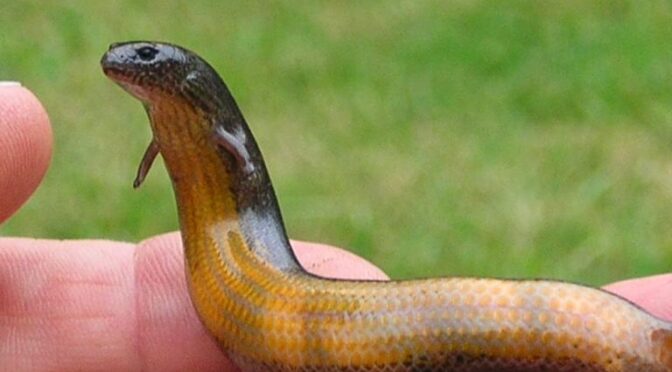This rather odd yet adorable creature may look like a snake with silly little arms, but it is actually the yellow-bellied three-toed skink (saiphos equalis), a species of reptile native to eastern Australia.
For many generations now, Scientists have been watching this species give birth by laying eggs, but recently scientists have noticed something very unusual.

Photo source: Wikipedia
All the yellow-bellied skinks scientists have been observing in the warm coastal lowlands are continuing to lay eggs, but the exact same species in the colder, more mountainous areas are actually starting to give birth to live young!

Photo source: AROD.com.au
Do you understand what that means?? This little lizard is evolving right before our very eyes!

Photo source: Bushcraft Oz
Thanks to scientific research, we’ve figured out that over 100 reptile lineages have slowly evolved from egg-laying to live births over time. So far that we’re aware, an estimated 20% of snakes and lizards give birth to live young now. However, the yellow-bellied three-toed skink is the first time in history that scientists have actually been able to witness the evolution of a species within just a single lifetime.

Photo source: Bushcraft Oz

Photo source: Imgur
A biologist at East Tennessee State University names James Stewart has been closely observing the phenomenon. He says:“By studying differences among populations that are in different stages of this process, you can begin to put together what looks like the transition from one birth style to the other.”

Photo Source: Bushcraft Oz
One important thing scientists are trying to figure out is how the newly evolved babies are able to get their nutrients from the environment now. All known baby mammals get their nutrients from the mother’s placenta, while babies incubated inside eggs get their nutrients from the yolk and egg shells. Since they’re not using either, how live skink babies are surviving in vitro is currently a great mystery.

Photo source: Rune Midtgaard

Photo source: UG Media
Another thing scientists are wondering is whether the skinks will begin to prefer one type of birth over the other, since both methods carry risks to the offspring. Eggs are more vulnerable to threats like predators and bad weather while internal fetuses are more dangerous for the mother.
One thing is for sure. Right now, Scientists have more questions than answers when it comes to this adorable yet strange little creature.
By Lara Starr
Source: The skink-evolution research was published online August 16 by the Journal of Morphology.


